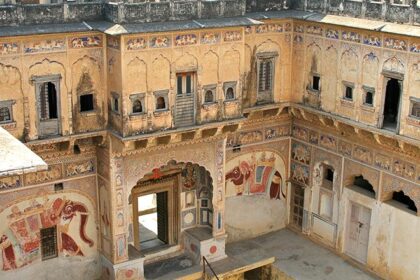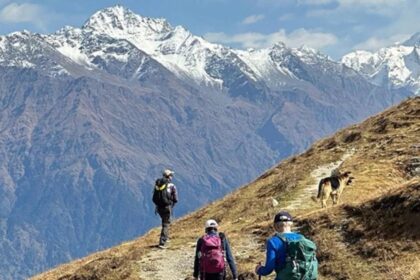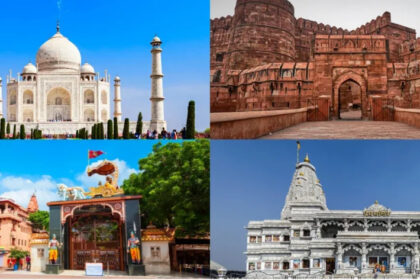Nestled amidst the serene hills of Himachal Pradesh, the Gurkha Fort stands as a symbol of courage, history, and architectural brilliance. This ancient fort, located in the picturesque town of Subathu (also known as Sabathu) near Solan, offers visitors a rare glimpse into India’s colonial past and the indomitable spirit of the Gurkha soldiers who once ruled the region. For history lovers, trekkers, and travelers seeking offbeat destinations, a visit to the Gurkha Fort is like stepping back in time to an era of valor and strategic warfare.
A Brief Introduction to Gurkha Fort
The Gurkha Fort, perched at an altitude of about 4,500 feet above sea level, is believed to have been built in the early 19th century by the Gurkha army. It served as a military stronghold during the period when the Gurkhas extended their empire from Nepal into parts of northern India. Located around 16 kilometers from Solan and roughly 70 kilometers from Shimla, this historic site overlooks the lush green valleys of the Himalayas, offering panoramic views that are as captivating as its history.
The fort is not just an architectural monument — it’s a living reminder of the military prowess and disciplined lifestyle of the Gurkhas, who were known for their bravery and loyalty. Even today, the aura of strength and endurance echoes through its weathered walls.
The Historical Significance
The Gurkha Fort has a deep connection with one of the most fascinating chapters in Indian history — the Anglo-Nepalese War (1814–1816). During this time, the Gurkhas had established a significant presence in the hill regions of Himachal Pradesh. The fort at Subathu served as a strategic base for their operations and later became a focal point during battles with the British East India Company.
After the signing of the Treaty of Sugauli in 1816, the British took control of this region, and the fort was eventually used as a cantonment. The Gurkha soldiers, however, continued to serve with distinction under the British army, maintaining their reputation as some of the world’s fiercest warriors.
Architecture and Design
One of the most striking features of the Gurkha Fort is its architecture. Built primarily with stone and lime, the structure reflects a unique blend of Nepalese and British military design. The fort’s sturdy walls, bastions, and arched gateways showcase its defensive purpose, while the panoramic layout reveals strategic planning to oversee surrounding territories.
Inside the fort complex, visitors can find old cannons, watchtowers, and remnants of living quarters once used by soldiers. The moss-covered walls and ancient carvings give the place an air of mystery and nostalgia. Though parts of the fort have weathered with time, its essence remains untouched — a testament to the craftsmanship and resilience of its builders.
The Surroundings and Natural Beauty
The Gurkha Fort is not only historically important but also a paradise for nature lovers. Surrounded by thick forests of pine, deodar, and rhododendron, the area is rich in biodiversity. The fort’s elevated position provides sweeping views of the Solan valley and the distant Himalayan peaks.
Many visitors combine their historical exploration with a short trek or nature walk. The trails leading to the fort are dotted with chirping birds, wildflowers, and refreshing mountain air — making it a favorite among photographers and adventure enthusiasts. The journey to the fort is as memorable as the destination itself.
Visiting the Gurkha Fort
Reaching the Gurkha Fort is an experience in itself. From Solan, travelers can drive up to Subathu Cantonment, which is under the supervision of the Indian Army. From there, a short uphill trek of about 1.5 kilometers leads to the fort’s entrance. While entry is restricted in certain areas due to army control, visitors can explore much of the exterior and enjoy breathtaking views of the surrounding landscape.
It’s best to visit during the months of March to June or September to November, when the weather is pleasant, and the skies are clear. During monsoon and winter, the trails can become slippery, but the misty atmosphere gives the fort an even more enchanting appearance.
Things to Do Around the Fort
For travelers planning a day trip or weekend getaway, the Gurkha Fort area offers several attractions nearby:
-
Subathu Cantonment Museum – Located close to the fort, this museum displays weapons, uniforms, medals, and artifacts related to the Gurkha regiments and British colonial era.
-
Solan Town – Known as the “Mushroom City of India,” Solan offers shopping, dining, and sightseeing options for visitors.
-
Dagshai and Kasauli – Two charming hill towns nearby with colonial architecture, churches, and scenic viewpoints.
-
Nature Walks and Birdwatching – The forests around the Gurkha Fort are home to diverse bird species, making it a paradise for birdwatchers.
The Legacy of the Gurkhas
The Gurkha Fort symbolizes not only a historic monument but also a continuing legacy. The Gurkhas are renowned for their bravery and service in the Indian and British armies. Their motto — “Better to die than be a coward” — reflects the same indomitable spirit that once echoed through these walls.
Even today, the Subathu Cantonment remains a base for Gurkha regiments of the Indian Army, keeping their proud traditions alive. Many visitors feel a sense of reverence and admiration when standing before the fort, knowing that it once housed warriors who shaped history through courage and discipline.
Travel Tips for Visitors
Before planning your trip to the Gurkha Fort, here are a few useful tips:
-
Permission: Since the fort lies within an army cantonment, some areas may require prior permission for access. Always check with local authorities or army personnel.
-
Footwear: Wear comfortable shoes for the uphill walk. The trail can be uneven in parts.
-
Photography: Respect restrictions on photography, especially in military zones.
-
Local Guide: Hiring a local guide can enhance your visit, as they often share fascinating stories about the fort’s history and legends.
-
Sustainability: Carry your own water and avoid littering. Help preserve the pristine beauty of this historical site.
Conclusion
The Gurkha Fort is more than just a relic of the past — it’s a living story carved into the hills of Himachal Pradesh. From its battle-scarred walls to its sweeping Himalayan views, every corner of this fort exudes heritage and heroism. Whether you are a history enthusiast, a nature lover, or simply someone seeking peace away from the bustle of the city, this fort offers an experience that blends adventure with reflection.



